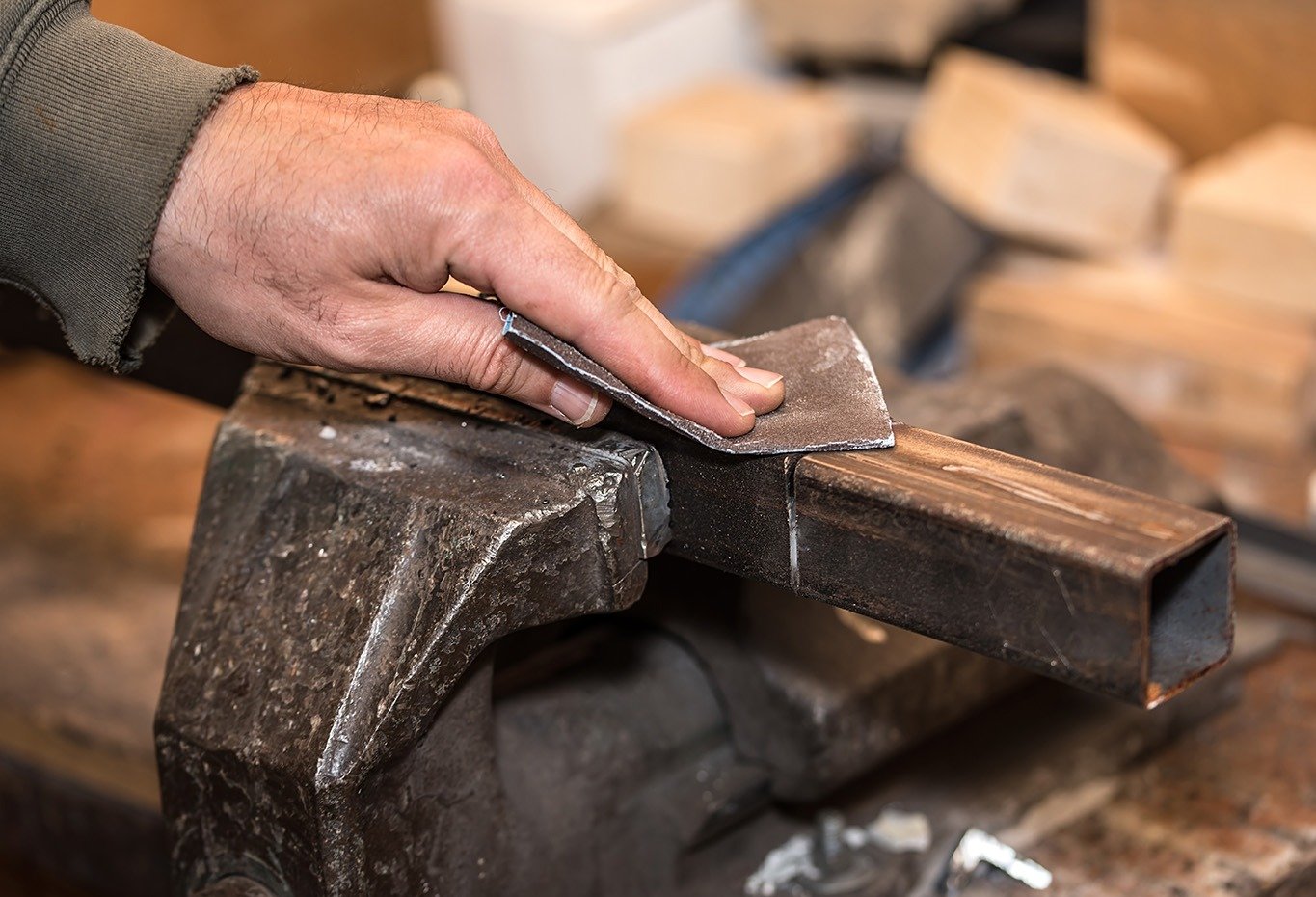Emery cloth is a versatile abrasive material used in a wide range of applications, from woodworking and metalworking to automotive repair and maintenance. Its durability, effectiveness, and ease of use make it an essential tool for achieving smooth, polished surfaces. This comprehensive guide will delve into the various aspects of emery cloth, including its types, uses, benefits, and best practices for achieving optimal results.
1. Understanding Emery Cloth
1.1 What Is Emery Cloth?
Emery cloth is a type of abrasive material that consists of a backing fabric coated with abrasive particles. These particles are typically made from emery, a natural form of corundum (aluminum oxide), or other synthetic abrasives. The cloth is designed to be flexible and durable, making it suitable for a variety of surface finishing tasks.
- Composition: Emery cloth is made by bonding abrasive particles to a cloth backing using an adhesive. The backing fabric is usually made from materials like cotton or polyester, which provides strength and flexibility.
- Abrasive Particles: The abrasive particles used in emery cloth vary in size and hardness. Emery particles are known for their sharpness and durability, while synthetic abrasives like aluminum oxide and silicon carbide offer consistent performance and extended lifespan.
1.2 Types of Emery Cloth
Emery cloth comes in different types, each tailored to specific applications and surface finishes. The main types include:
- Standard Emery Cloth: This is the most common type, suitable for general-purpose sanding and polishing. It is available in various grit sizes, ranging from coarse to fine.
- Waterproof Emery Cloth: Designed for use with water or oil, waterproof emery cloth is ideal for wet sanding. It prevents clogging and ensures a smoother finish.
- Flexible Emery Cloth: This type of emery cloth features a highly flexible backing, making it suitable for sanding irregular or curved surfaces.
- Heavy-Duty Emery Cloth: With a more robust backing and coarser abrasive particles, heavy-duty emery cloth is designed for heavy sanding and stripping tasks.
2. Uses of Emery Cloth
Emery cloth is used in a variety of applications, each benefiting from its unique properties. Here are some common uses:
2.1 Woodworking
In woodworking, emery cloth is used for:
- Sanding Wood: Emery cloth helps to smooth wood surfaces, remove imperfections, and prepare wood for finishing. It can be used on both raw and finished wood.
- Polishing Wood: Fine-grit emery cloth can be used to achieve a polished, smooth surface on wooden furniture and cabinetry.
- Removing Old Finishes: Emery cloth is effective in stripping old varnishes and paints from wooden surfaces, preparing them for new finishes.
2.2 Metalworking
Emery cloth is widely used in metalworking for:
- Deburring Metal: Emery cloth removes burrs and sharp edges from metal parts, ensuring a smooth and safe finish.
- Polishing Metal: It is used to polish and shine metal surfaces, including stainless steel, brass, and aluminum.
- Rust Removal: Emery cloth can help in removing rust and corrosion from metal surfaces, restoring their appearance and functionality.
2.3 Automotive Repair
In automotive repair, emery cloth is used for:
- Sanding and Cleaning Parts: It helps in sanding and cleaning various automotive components, such as brake drums, engine parts, and exhaust systems.
- Preparing Surfaces for Painting: Emery cloth prepares metal and plastic surfaces for painting by creating a rough texture that allows paint to adhere better.
- Restoring and Polishing: It is used to restore and polish metal trim, bumpers, and other automotive parts.
2.4 Crafting and DIY Projects
Emery cloth is also popular in crafting and DIY projects for:
- Finishing and Shaping: It helps in finishing and shaping materials like wood, metal, and plastic in various craft and DIY projects.
- Polishing Small Items: Emery cloth is used to polish small items and intricate details in handmade crafts.
- Restoring Vintage Items: It is useful in restoring and maintaining vintage or antique items by removing tarnish and scratches.
3. Choosing the Right Emery Cloth
Selecting the appropriate emery cloth for a specific task involves considering several factors:
3.1 Grit Size
Emery cloth comes in various grit sizes, each suited to different tasks:
- Coarse Grit (40-60): Ideal for heavy sanding and material removal. It is used for initial surface preparation and stripping.
- Medium Grit (80-120): Suitable for general sanding and smoothing. It helps in refining surfaces after coarse sanding.
- Fine Grit (150-400): Used for final finishing and polishing. Fine-grit emery cloth provides a smooth, polished surface.
- Extra Fine Grit (600 and above): Used for ultra-smooth finishes and polishing delicate surfaces. It is often used in automotive and metalworking applications.
3.2 Backing Material
The backing material of emery cloth affects its flexibility and durability:
- Cotton Backing: Provides a good balance of flexibility and strength, making it suitable for general-purpose use.
- Polyester Backing: Offers greater durability and resistance to tearing, making it suitable for heavy-duty applications.
- Flexible Backing: Ideal for sanding irregular or curved surfaces, as it conforms to the shape of the workpiece.
3.3 Abrasive Material
The type of abrasive material affects the performance of emery cloth:
- Emery: Natural abrasive with good durability, used for general-purpose sanding and polishing.
- Aluminum Oxide: Synthetic abrasive with consistent performance, suitable for a wide range of applications, including woodworking and metalworking.
- Silicon Carbide: Known for its sharpness and durability, it is used for fine sanding and polishing tasks, especially on hard materials.
4. Techniques for Using Emery Cloth
Proper techniques for using emery cloth ensure optimal results and extend the life of the material.
4.1 Sanding Techniques
- Sanding Motion: Use long, even strokes to avoid creating uneven surfaces. Sand in the direction of the grain for wood and in a circular motion for metal surfaces.
- Pressure: Apply consistent, moderate pressure while sanding. Too much pressure can cause scratches or damage the surface.
- Avoid Over-Sanding: Be cautious not to over-sand, as this can lead to a loss of material and affect the final finish.
4.2 Polishing Techniques
- Preparation: Ensure that the surface is clean and free of debris before polishing. This helps to achieve a smooth and even finish.
- Technique: Use a light touch and circular motion when polishing. Apply gentle pressure to avoid damaging the surface.
- Finishing: For a high-gloss finish, use progressively finer grits of emery cloth, ending with an ultra-fine grit.
4.3 Cleaning and Maintenance
- Cleaning Emery Cloth: After use, clean emery cloth to remove debris and particles. This helps in maintaining its effectiveness and prolonging its lifespan.
- Storing Emery Cloth: Store emery cloth in a dry, clean environment to prevent contamination and damage. Keep it flat or rolled to maintain its shape.
5. Safety Considerations
When using emery cloth, safety is paramount to prevent accidents and ensure effective results.
5.1 Personal Protective Equipment (PPE)
- Eye Protection: Wear safety glasses or goggles to protect your eyes from dust and debris.
- Respiratory Protection: Use a dust mask or respirator to avoid inhaling fine particles and dust.
- Gloves: Wear gloves to protect your hands from abrasions and irritation.
5.2 Workspace Safety
- Ventilation: Ensure proper ventilation in your workspace to minimize dust buildup and exposure to airborne particles.
- Cleanliness: Keep your workspace clean and organized to prevent accidents and ensure efficient use of emery cloth.
- Proper Disposal: Dispose of used emery cloth and debris in accordance with local regulations to ensure environmental safety.
6. Troubleshooting Common Issues
While using emery cloth, you may encounter certain issues. Here’s how to address them:
6.1 Clogging
- Cause: Clogging occurs when abrasive particles become filled with debris, reducing the effectiveness of the cloth.
- Solution: Regularly clean the emery cloth by brushing off debris. Use a cleaning tool or compressed air to remove particles from the abrasive surface.
6.2 Uneven Sanding
- Cause: Uneven sanding can result from inconsistent pressure or improper technique.
- Solution: Apply even pressure and use a consistent sanding motion. Check your technique and make adjustments as needed.
6.3 Wear and Tear
- Cause: Emery cloth can wear out over time, especially with heavy use.
- Solution: Replace worn-out emery cloth with new material. Use the appropriate grit size for the task to ensure optimal performance.
7. Applications in Various Industries
Emery cloth’s versatility makes it valuable across different industries. Here are some industry-specific applications:
7.1 Woodworking Industry
In woodworking, emery cloth is used for:
- Finishing Furniture: Achieve smooth and polished surfaces on wooden furniture and cabinetry.
- Shaping and Smoothing: Shape and smooth wooden components for construction and cabinetry.
- Restoring Antique Wood: Restore and maintain antique wooden items by removing old finishes and imperfections.
7.2 Metalworking Industry
In metalworking, emery cloth is employed for:
- Metal Fabrication: Sand and polish metal parts and components for machinery and equipment.
- Welding Prep: Prepare metal surfaces for welding by removing rust, scale, and contaminants.
- Machinery Maintenance: Maintain and repair machinery by cleaning and polishing metal surfaces.
7.3 Automotive Industry
In the automotive industry, emery cloth is used for:
- Engine Repairs: Clean and polish engine parts, including pistons, valves, and cylinders.
- Bodywork: Prepare automotive surfaces for painting and repair by sanding and smoothing.
- Rust Removal: Remove rust and corrosion from automotive components to extend their lifespan.
8. Conclusion
Emery cloth is a versatile and essential tool used across various industries and applications. Its unique properties, including flexibility, durability, and effectiveness, make it suitable for a wide range of tasks, from woodworking and metalworking to automotive repair and crafting.
By understanding the different types of emery cloth, selecting the right material for your needs, and employing proper techniques, you can achieve high-quality results and ensure the longevity of your tools. Whether you are a professional in a specific industry or a DIY enthusiast, emery cloth offers the performance and reliability needed to complete your projects with precision and efficiency.
Embracing the benefits of emery cloth and following best practices will help you achieve smooth, polished surfaces and successful outcomes in your work. With proper care and maintenance, emery cloth will remain a valuable tool in your toolkit for years to come.


